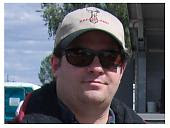I use generalizations in this and other posts. A lot. There are exceptions, which is going to be the focus of this blog after all the introductions and explanations are done.
Knives are kept safe on the body until needed, from a fixed blade in a sheath, or a closed folder. They are attached or stored on the strong side of the body: attached to a belt or in a pocket. The modern folder has a clip on the handle, and you clip the knife into your front pocket next to the seam, that is the back of the pocket (over your hip). The knife is in the pocket, with the clip on the outside. A folder with no clip, like a Case or Swiss Army knife, will sit in the bottom of your pocket.
Clips may store the knife either tip up or tip down. Tip up is dominant, as the blade is then snug against the back of pocket and unable to open. Tip down is rare, but one advantage of this variant is that the blade is kept closed by gravity, as the pivot is at the top of the knife.
Most knives have clips for right handed people: on the right side of the handle (looking at the knife tip up and edge away from you) either for tip up or down. It should keep the knife from moving, shifting or falling out, and still allow easy removal when needed.
The draw varies based on where the knife is and how it's attached. If it's clipless you search around in your pocket, get a grip and pull it out. Then you need to figure out how the knife is oriented in your hand, and then shift it around so it can be opened.
The clip knife, tip up is grasped with the thumb inside the pocket and a finger or two on the outside grasping the clip or exposed handle. It's then drawn out and shifted up or down so the thumb can open it. A tip down knife is drawn the same way, but then pivoted so the spine of the knife is against your palm and your thumb ready to open the blade.
Fixed blade sheaths will have a loop to attach it to something, usually your belt. Sheaths also usually have a strap over or around the knife to keep it from falling out, which needs to be disengaged: generally unsnapped. Then you pull the blade out. Most sheaths are right handed, storing the knife over your hip on the right side edge facing rearward.
The draw here is simple: undo any safety, grip the handle and pull the blade out. The hammer grip is used as it is the same as using a knife to cut food or a saw to, well, saw.
Friday, August 3, 2007
Subscribe to:
Post Comments (Atom)

No comments:
Post a Comment